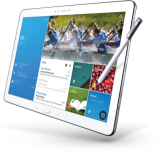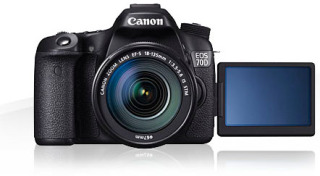Thursday, September 18. 2014
Zero-knowledge cloud storage considerations

I’m using Wuala’s cloud storage for some years now, and I tried to challenge the status quo to see if there are better alternatives available in the meantime. The main requirement for me is a zero-knowledge provider, a provider that does not know my password and cannot decrypt my data (without brute force). I found these candidates:
Wuala, Tresorit, SpiderOak, MEGA, SeaFile
(Note that SeaFile is a self-hosted open-source solution.) The next requirement is location: Servers should not be located in the USA, and there should be an Android client that supports upload ...
Wuala, Tresorit, SpiderOakDouble-Plonk!, MEGA, SeaFile
... and there should be an official Linux client ...
Wuala, TresoritPlonk!, MEGA, SeaFile
... and the service shouldn’t require exotic TCP ports such that clients work behind a corporate firewall ...
... and the service should support file revisions, download on demand only, and files should stay encrypted on client exit ...
Wuala, MEGATriple-Plonk!
Way to go, Wuala!
Saturday, June 21. 2014
Android smartphone coming up, III

I’m adding to my phone history:
A look back at the Galaxy Nexus
I only noticed recently that this phone never had a “Samsung” tag at all; while Samsung indeed was the hardware manufacturer, that device simply was a Google phone.
Surprisingly, I was less into rooting/modding with this phone than I was with my first Android phone, the Motorola Milestone, although the pureness and openness of the Nexus devices was dedicated to such purposes. Maybe because Android 4 finally featured a lot innately: Useful home screen, editing contact groups & birthdays, taking screenshots, mobile data usage control, unlocking by face recognition, panorama camera mode, rich notifications, better search, better messaging. I only rooted it once it was clear there won’t be any further updates; I did so to be able to use advanced anti-theft features. But now it’s beginning to bug me that the hardware (RAM) is getting old (small); the phone is lagging a lot if the uptime reaches one week. I had to turn off various useful but RAM-eating services, like, live wallpapers. Well, it’s 2½ years old.
Mentioning Android features, I wouldn’t be surprised if the Google Now experience becomes the actual core in the future, making devices smart and active companions that exactly know about their users’ habits.
... and the AppIe ¡Phone
Yes, I used an ¡Phone 4 for some months. I didn’t find it that intuitive like it was always praised; e.g., where do you find email settings? No, not at all in the email app, but in the system settings! Also, the ¡Phone has no idea of the concept of widgets or background services. There is no such thing as a third-party keyboard with swipe gestures and text prediction, or a service that changes settings according to detected current conditions. AppIe physically seals phones and notebooks, tries to trick users into buying entirely new devices by making component upgrades expensive or impossible. Yet, ¡People only seem to care about the smoothness of animations. Whoever buys AppIe, it’s their own fault.
Coming up: Samsung Galaxy S5
 I somehow drifted away from praising Google’s “pure Android” experience, although they drive core innovations. Having used my first “real” Samsung device, the NotePRO tablet, for some time, I came to appreciate the AppIe-like benefit (what!!1) of an interlinked environment: Samsung devices are “magically” in touch with each other—I can remote control both my TV and my sat receiver/HDD recorder/Blu-ray player (but, strangely enough, not my microwave), I can stream pictures, videos and even my whole UI screen to my TV over the freakin’ air. I mean, totally on their purpose and without me “hacking” anything. It’s no longer Android or Google integration that’s exciting to me, it’s the Samsung experience. I don’t mind TouchWiz as long as they have a mission behind it. (OTOH, the Samsung store praises cheap and foolish third-party apps exclusively, it’s totally pointless to search for apps there, IMO.)
I somehow drifted away from praising Google’s “pure Android” experience, although they drive core innovations. Having used my first “real” Samsung device, the NotePRO tablet, for some time, I came to appreciate the AppIe-like benefit (what!!1) of an interlinked environment: Samsung devices are “magically” in touch with each other—I can remote control both my TV and my sat receiver/HDD recorder/Blu-ray player (but, strangely enough, not my microwave), I can stream pictures, videos and even my whole UI screen to my TV over the freakin’ air. I mean, totally on their purpose and without me “hacking” anything. It’s no longer Android or Google integration that’s exciting to me, it’s the Samsung experience. I don’t mind TouchWiz as long as they have a mission behind it. (OTOH, the Samsung store praises cheap and foolish third-party apps exclusively, it’s totally pointless to search for apps there, IMO.)
I notice, Samsung is the new Nokia: Every jerk has got one—people who don’t know how to mute their phones or change the standard sounds. I’m the next in line!
... and the Gear Fit
 In addition, I’m leering at Samsung’s health-centric smartwatch Gear Fit, as it perfectly integrates into their (or my) device environment.
In addition, I’m leering at Samsung’s health-centric smartwatch Gear Fit, as it perfectly integrates into their (or my) device environment.
Do they also build toothbrushes?
Saturday, February 15. 2014
How to root the Galaxy Nexus

... GSM version (Maguro) with Android 4.3 from GNU/Linux
I found so many incomplete tutorials written in bad English that I decided to write one myself and keep it simple. You must have your phone’s bootloader unlocked; doing so will wipe your device!
- Watch this tutorial video.
- Download the fastboot and adb binaries, e.g. from the Universal Nexus Linux Toolkit. Extract the archive on your machine. Find the binaries.
The problem with this toolkit is that the bundled zips are rather old and didn’t work for me, so: - Download the ClockworkMod recovery image from here.
- Download the SuperSU zip file from here.
- Connect your phone to your PC via USB.
- Boot your phone into bootloader mode: Power it off, push both the volume rocker up+down and then press the power button, i.e., press all three at once for about two seconds.
- ./fastboot oem unlock if you haven’t ever done it. This will wipe your device, reset it to factory settings and delete all your data. Yes, really.
- ./fastboot flash recovery /path/to/recovery-clockwork-6.0.4.7-maguro.img
- Now load the recovery: Volume button down twice to choose Recovery mode, power button to select.
- Navigate using the volume rocker: “install update from zip”, press power button to select, choose “install zip from sideload”, press power button.
- ./adb sideload /path/to/UPDATE-SuperSU-v1.93.zip
- Navigate back and reboot normally. Your installed apps should now show SuperSU installed.
Have fun!
Sunday, January 12. 2014
My quest for a tablet, II

Shortly after I had published my first post in this series, rumors about a large (12.2”) high-resolution (2K) Note-branded Samsung Android tablet turned up. I followed those rumors closely until the sudden reveal of the Galaxy NotePRO at CES a few days ago!
This device finally seems to fit my original requirements, tailored around “active” reading:
 High-resolution screen for perfect font rendering (247 ppi); LCD in favor of e-ink due to versatility,
High-resolution screen for perfect font rendering (247 ppi); LCD in favor of e-ink due to versatility,- Large screen for displaying A4-/Letter-sized or magazine pages in (almost) their original size,
- Dedicated stylus input for on-screen and in-document annotations in form of free-hand text, graphs, arrows, and formulas.
I still get opinions that even 10” tablets are too large & heavy and 8” are about right; anything larger ought to be a MS Windows 8 notebook. But MS does not play a role in my personal computing setup. I really do care about the points listed above.
A different point is software updates. I'm an update geek regarding Android, but in this case my focus is on the stylus software features (consider search by hand-drawn shape—yes, it works!), so I don't mind Samsung's TouchWiz UI or the possible lack of OS updates, especially since Samsung has finally fixed some long criticized issues. And it's based on the still fresh Android 4.4 after all, while my Galaxy Nexus is now stuck to 4.3.
Originally, I wanted such a device for a better workflow of reading scientific publications for work. Too bad my job has meanwhile changed... twice. But I will still make use of its features for “active” reading (annotating) of math/CS literature and for conceptual work, as well as for image editing.
Wednesday, December 4. 2013
grub rescue >

My boot partition was so small that I couldn’t do any initramfs-updates any more, so I backed it up, deleted /dev/md0 (boot) and /dev/md1 (swap) to recreate both with new sizes, restored my backup, and after a reboot grub couldn’t find anything due to the new UUIDs of the partitions. ![]()
Before I rebooted, I should have merged the output of
Instead, I had to go through this:
At grub rescue prompt:
... bringing me to a BusyBox/initramfs emergency prompt:
... bringing me to a simple bash prompt in my system:
... as well as:
... to be able to run:
You wouldn’t learn much if you weren’t forced to fix things once in a while. — myself
Wednesday, November 27. 2013
Server migrated from virtual to virtual, II

Quote of myself from four years ago:
I had to do the migration to a parallel machine and had only one week to accomplish this. I’ll never do it this way again, however, rather pay for two servers for a short time and decide when to finally switch.
This is exactly how I did it this time.
Although Debian 5 lenny had been released in Feb 2009, it didn’t yet make it into Host Europe’s 4.0 line of virtual servers; instead, that virtual machine was still based on 2007’s Debian 4 etch, which received its last kernel update, still 2.6.18, by the provider in Aug 2011. I upgraded it to Debian 6 squeeze nonetheless. I noticed that this year’s Debian 7 wheezy does not run under an etch kernel (especially libc6, rkhunter and aide), and as squeeze is already oldstable since May and will no longer be maintained by next May, it was time to perform an upgrade.
Now I run an instance of their 7.0 line with the same price, but RAM and disk space were both doubled (to 2 GB and 100 GB, respectively). It is still based on squeeze with a 2.6.32 kernel; based on my experience, I expect it to run wheezy and jessie before I have to switch again (in about another four years).
Like previously (and like seven years ago), I did the TCP forwarding using rinetd, except for Postfix, for which I set up relaying again.
Tuesday, October 15. 2013
Wo das Netz nicht gar so dünn ist, III

Ein Nachtrag fürs Protokoll: Ich bin seit Jahresanfang auf GigaSpeed 30 (30 Mbps Downstream/4 Mbps Up) der A1 Telekom, deren Produktreihe sich mittlerweile auf Glasfaser Speed Power umbenannt hat. Hauptgrund für das „vorgezogene“ Upgrade vom 16er-Blech äh Paket (16 Down/1 Up) war der Upstream, der für mich angesichts des langsamen Einschleichens von Cloud-Speichern in den elektronischen Alltag relevant geworden war.
Mit dem Preisverfall deren 30er-Pakets von 14,90 auf 9,90 €/M Mitte 2012 war plötzlich die Verfügbarkeit an meinem ländlichen Wohnort nicht mehr gegeben, obwohl das Paket mir offensichtlich vor drei Jahren zur Auswahl stand. Ich lauerte in den Monaten danach auf die Wiederverfügbarkeit, und tatsächlich, im November tauchte es wieder auf. Der Bestellvorgang ermittelte dann allerdings doch Nichtverfügbarkeit. Erst im Februar war mir die tatsächliche Bestellung möglich.
Das Modem hat sich auf 22,5 Mbps Downstream und 3,1 Mbps Upstream eingependelt. Die Gesamtkosten belaufen sich übrigens auf annehmbare 31,05 €/M (mit 19,90 für das Basispaket und €15÷12 Pauschale).
In gewissem Sinne sind das „drei Schritte vor, zwei zurück“: Zwar steigerte sich der Upstream von 1 auf 3 Mbps, doch werden aufgrund demnächst verdoppelter Pixelzahl meine RAW-Fotos doppelt so groß.
Thursday, July 11. 2013
DSLR upgrade considerations

It took me some time to write a post about photo gear.
As my Canon EOS 40D is now really becoming old, I’m looking for an upgrade. Sadly, my photography hasn’t evolved much, so I most probably won’t wait for the 7D Mk II (if that one still makes sense, given the 6D) and will stay with their prosumer x0D line. Surprisingly, it took Canon three years to introduce a successor to the 60D: The EOS 70D. Although I originally considered the 60D a downgrade within that line, my view has changed with its successor: The reduced weight is not something negative, the reduced size is minimal, the plastic housing at least has got weather sealing, and the swivel screen perfectly fits the camera’s video capabilities. I’d get (compared to the 40D):
- 20 MP instead of 10 MP,
- DIGIC 5+ processor instead of DIGIC 3,
- ISO 12800 max. instead of ISO 1600,
- 19 AF points instead of 9,
- Dual-pixel AF in Live View instead of a manual trigger with mirror flip,
- 98% viewfinder coverage instead of 95%,
- [Update: Viewfinder with switchable gridline overlay and electronic level,]
- HD movies instead of no movies at all,
- HDMI output instead of plain old analog,
- Weather sealing instead of none,
- High-res swivel touch screen instead of low-res static plain LCD,
- Built-in Wi-Fi for remote operation using Canon’s smartphone app(!!),
- Built-in flash as off-camera remote flash controller!
- Continuous shooting with a rate of 7 fps instead of 6.5 fps, but the RAW image burst goes down from 17 to 16 and the JPEG burst from 75 to 65.

So, quite a jump in technology during the last six years. I plan my purchase for the end of this year.
About
Calendar
| Mon | Tue | Wed | Thu | Fri | Sat | Sun |
|---|---|---|---|---|---|---|
| ← Back | December '25 | Forward → | ||||
| 1 | 2 | 3 | 4 | 5 | 6 | 7 |
| 8 | 9 | 10 | 11 | 12 | 13 | 14 |
| 15 | 16 | 17 | 18 | 19 | 20 | 21 |
| 22 | 23 | 24 | 25 | 26 | 27 | 28 |
| 29 | 30 | 31 | ||||